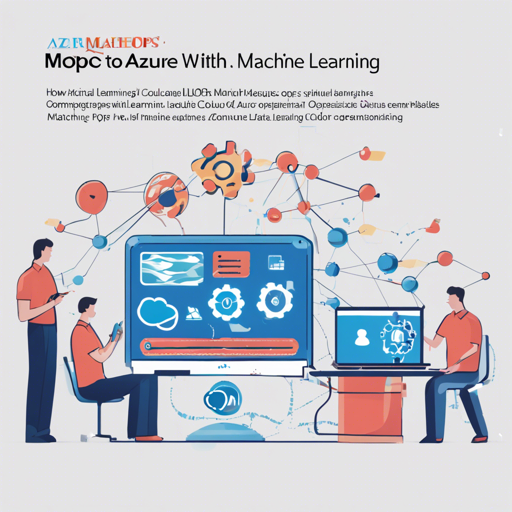Welcome to the world of Machine Learning Operations (MLOps)! If you’re looking to streamline your machine learning workflows and integrate them with development practices, you’re in the right place. This blog will guide you through the process of setting up MLOps using Azure Machine Learning and Azure DevOps, based on the hands-on workshop created by Mohammad Ghodratigohar.
Understanding MLOps
MLOps is like a well-orchestrated orchestra where each musician plays their part in harmony. While traditional DevOps focuses on software development and deployment, MLOps extends that framework to the machine learning ecosystem, ensuring that every stage—data preparation, model training, deployment, and monitoring—works seamlessly together.
Setting Up Your MLOps Workflow
In this section, we will outline the workflow for MLOps with Azure Machine Learning:
- Define your objectives: Clearly outline what you aim to achieve with your machine learning models.
- Build machine learning pipelines: Use Azure Machine Learning to develop repeatable and reusable steps for your processes.
- Create environments: Set up reusable software environments for both training and deployment phases.
- Register and deploy models: Package your models and deploy them while keeping track of the metadata.
- Monitor and govern: Log all the necessary information including who deployed the model and the reasons for any changes.
- Automate everything: Utilize Azure Pipelines for end-to-end lifecycle automation.
Learning Resources
The complete implementation is documented in a 10-part tutorial video series. Dive deep into each part to build your understanding:
- Video Series Playlist
- Part 1
- Part 2
- Part 3
- And more!
Analogy for Understanding MLOps Steps
Think of your MLOps process as baking a cake. Each ingredient (data) is vital for the final product. In this scenario:
- Machine Learning Pipelines: These are your recipe instructions, guiding you through each step (data preparation to deployment).
- Software Environments: Just like choosing the right oven temperature, ensures that the conditions are right for your model’s training and deployment.
- Model Registration: This is similar to storing your cake recipe safely for later use, ensuring you remember how to reproduce your creation.
- Governance Data: Just like taking notes on any changes in your recipe (like substituting butter for apple sauce), you’ll want to track why and when models were revised.
- Automating the Process: This is the equivalent of setting up an automatic timer for baking, streamlining the entire production.
Troubleshooting Tips
As you embark on your MLOps journey, it’s common to face challenges. Here are a few tips to help you troubleshoot:
- I can’t deploy my model: Make sure all dependencies are correctly installed in your environment.
- Data drift detected: Check your model’s performance on newer data and consider retraining with the latest dataset.
- Collaboration issues: Ensure clear communication lines in your team and document every step of the process.
For more insights, updates, or to collaborate on AI development projects, stay connected with fxis.ai.
Conclusion
Implementing MLOps using Azure can vastly improve the efficiency of your machine learning workflows while ensuring better governance and monitoring. By following the steps outlined above and utilizing the available resources, you’ll be well on your way to mastering MLOps.
At fxis.ai, we believe that such advancements are crucial for the future of AI, as they enable more comprehensive and effective solutions. Our team is continually exploring new methodologies to push the envelope in artificial intelligence, ensuring that our clients benefit from the latest technological innovations.

